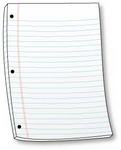Paperless Lessons
 Most teachers have regular access to paper, copiers, computers and office supplies. But what about when all that stuff breaks down or you forget something? Or if you are a volunteer teaching in a developing community and can’t make copies?
Most teachers have regular access to paper, copiers, computers and office supplies. But what about when all that stuff breaks down or you forget something? Or if you are a volunteer teaching in a developing community and can’t make copies?
A few paperless activities and other ways to adapt:
- Alibi can be nearly paperless (brainstorm questions before, together, on the whiteboard).
- The Age of Man: write four or five age categories (0-10, 10-20…) and students work in groups to think of five things that people generally do in each (go to school, get married, retire, etc.). Together you come up with a list of five for each as a group on the board. You can do different ranking activities with these: overall, which five are the most difficult/stressful? Which five do people enjoy the most? Which can be done at any age and which would actually be ideal at some other age? Which have the students done – and they can interview each other about one or two.
- Instead of handing out copies, you can dictate your sentences/questions for each student to write down. Or if there really is no paper at all, you can dictate and have students take turns writing on the board – maybe two teams and the one with the “more correct” version at the end “wins” – then the group works with those questions.
- You can do tongue twister pronunciation races where students race to the board and write…in fact board races of any kind are usually winners with both kids and fun-loving adults.
- And last but not least: you can conserve paper by making double-sided copies or two smaller copies on one page and cutting it in half.